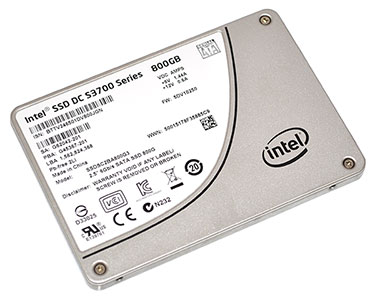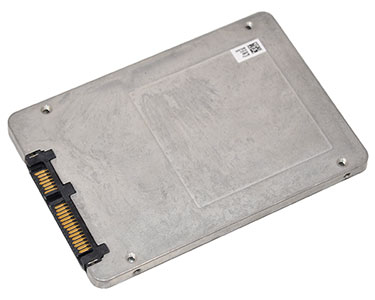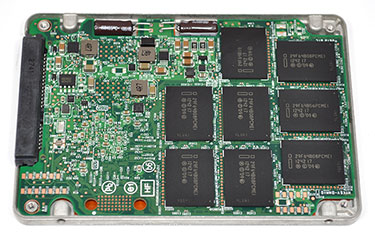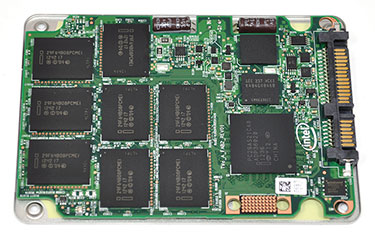Introduction
Solid-state drives have become the standard-bearers for today's PC storage requirements. Whether you're shopping for a laptop or a desktop computer, an SSD should, at the very least, be near the top of your list of requirements.
And it's easy to see why. SSDs are remarkably fast, offer near-instant access to your data, have no moving parts, make no perceivable noise and can even reduce power consumption, leading to greater battery life in mobile devices. We've eulogised the technology on more than one occasion in recent years, and the flash-based drives have gone from strength to strength.
Capacities are up, prices are down, and the main performance limitation seems to be imposed by a common SATA 6Gbps interface that was considered futureproof not so long ago. Heck, even the blue screens of death, dodgy firmwares and bricked drives appear to be a thing of the past.
So where do we go from here? Reliable, high-performance 250GB drives are readily available for under £150, and there isn't a great deal to choose between them in terms of specified speed as most manufacturers quote figures that all-but saturate what's available to the SATA 6Gbps interface. Have SSDs hit a wall in terms of innovation, then?
Not necessarily. The ultra-fast PCIe interface holds the key to the next phase of the sequential-speed race, but there's also room for improvement in other areas, and industry giant Intel is single-handedly switching the focus from outright speed to performance consistency with the enterprise-orientated DC S3700 Series.
The idea behind the drive, says Intel, is to "deliver data at a breakneck pace, with consistently low latencies and tight IOPs distribution." Consistent and tight are the key terms, as while most drives will advertise tantalising average performance figures, such numbers don't always tell the full story. Think of it in graphics terms; an average of 30 frames per second sounds good, but if performance is flittering between 10 and 50 fps, your real-world experience won't be stellar.
Similarly, most SSDs exhibit erratic behaviour under different workloads. Drive performance tends to drop over time, and garbage collection - the process of reading and rewriting data to the flash memory to free up blocks - can lead to unwanted interruptions to latency and a fair amount of unpredictably. Intel's goal with the DC S3700 is to practically eradicate any such issues, with the manufacturer promising maximum latencies of less than 500μs, 99.9 per cent of the time.
In order to achieve this level of predictability, the DC S3700 makes use of Intel's custom-designed, eight-channel SATA 6Gbps controller - model #PC29AS21CA0 - and an in-house-developed firmware.
Designed for data centre environments, the 2.5in drive is available in a choice of 100GB, 200GB, 400GB and 800GB capacities, and in response to growing demand for smaller form factors, Intel also offers a 1.8in model in 200GB and 400GB capacities specifically for blade servers.
Each drive pairs the SATA 6Gbps controller with Intel's own 25nm High Endurance Technology MLC NAND, as well as an onboard DDR3 cache. The 2.5in 800GB drive on the test bench today sports eight 64GB NAND packages on either side of the PCB, and a pair of 512MB DDR3-1600 memory chips that combine to create a large 1GB cache.
Intel's HET-MLC NAND is rated for 10 fully random Drive Writes per Day (DWPD) over a typical five-year drive life, giving the 800GB model an endurance of 14.6 petabytes, or as Intel likes to put it "equivalent to recording over 186 years of HD video over the life of the drive."
Further signalling the drive's enterprise aspirations, Intel includes full data path parity checks, cyclic redundancy checks (CRC), logical block address (LBA) tag validation, support for the advanced encryption standard (AES), and a pair of on-board capacitors that enable all cached data to be written to NAND in the event of a power failure.
Intel Solid-State Drive DC S3700 Series |
||||
|---|---|---|---|---|
| Capacity | 100GB |
200GB |
400GB |
800GB |
| NAND | 25nm Intel High Endurance Technology Multi-Level Cell |
|||
| Interface | SATA 6Gb/s, compatible with SATA 3Gb/s and 1.5Gb/s |
|||
| Sequential Read Speed | up to 500 MB/s |
up to 500 MB/s |
up to 500 MB/s |
up to 500 MB/s |
| Sequential Write Speed | up to 200 MB/s |
up to 365 MB/s |
up to 460 MB/s |
up to 460 MB/s |
| Random IOPs (4KB Reads / Writes) | up to 75,000 IOPS / 19,000 IOPS |
up to 75,000 IOPS / 32,000 IOPS |
up to 75,000 IOPS / 36,000 IOPS |
up to 75,000 IOPS / 36,000 IOPS |
| Random IOPs (8KB Reads / Writes) | up to 47,500 IOPS / 9,500 IOPS |
up to 47,500 IOPS / 16,500 IOPS |
up to 47,500 IOPS / 19,500 IOPS |
up to 47,500 IOPS / 20,000 IOPS |
| Active Power Consumption | up to 6 W Typical |
|||
| Idle Power Consumption | 650 mW Typical |
|||
| Life Expectancy | 2 million hours Mean Time Between Failures (MTBF) |
|||
| Lifetime Endurance | Up to 10 Drive Writes Per Day |
|||
| Warranty | 5 Years |
|||
| Approx. Retail Price | £200 |
£400 |
£800 |
£1,600 |
Consistency and predictability are essential to an enterprise drive - particularly when multiple drives are paired together in a RAID array - but Intel's focus on tight IOPs distribution does come at the expense of maximum performance. Compared to the numbers being bandied about by today's consumer SSDs, sequential read and write speeds of up to 500MB/s and 460MB/s, respectively, for the 800GB DC S3700 aren't exactly cutting-edge.
Let's see if we can make sense of why consistency matters by putting the DC S3700 to the test.













